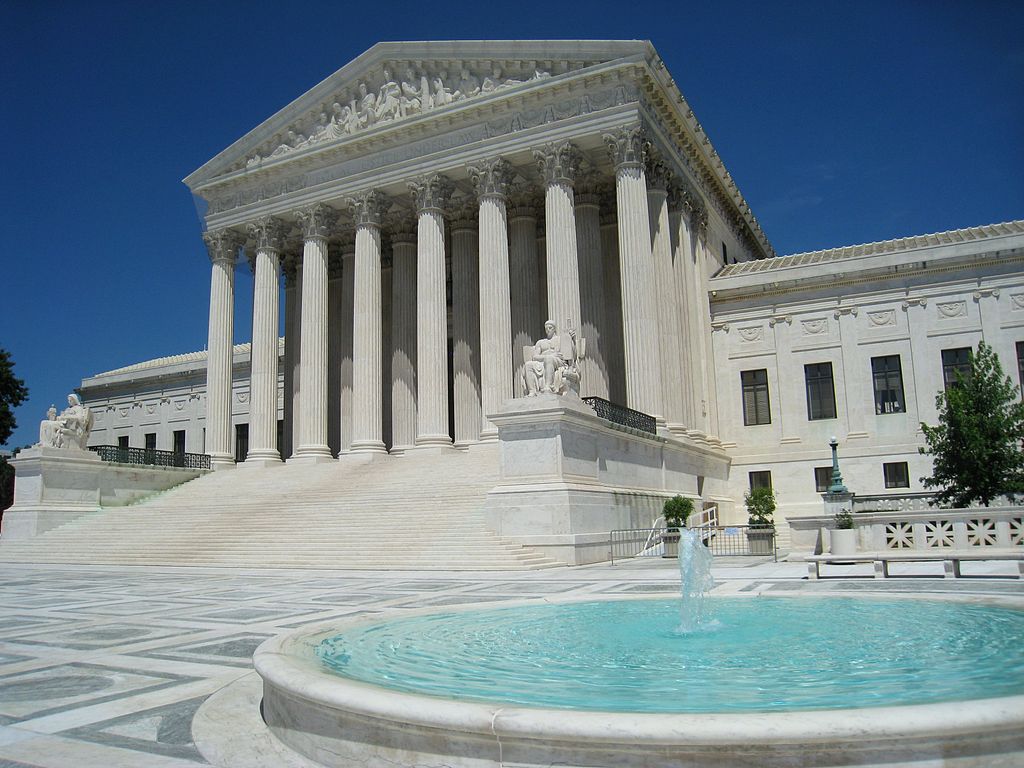Will U.S. Supremes Rule on State Districts?
March 28 oral arguments may signal ruling on Wisconsin’s gerrymandered districts.
It’s a big question:
Did a U.S. Supreme Court order that told Pennsylvania legislators to immediately redraw the districts of U.S. House members signal how the Court would rule in the challenge to Wisconsin Assembly districts?
No, according to attorneys on both sides of the Wisconsin case.
But, they add, a redistricting case from Maryland that the U.S. Supreme Court will hear March 28 may offer the next clue to how the court rules in the Wisconsin case.
“There’s huge difference between the Wisconsin and Pennsylvania cases,” said Rick Esenberg, president of the Wisconsin Institute for Law and Liberty (WILL).
WILL filed a legal brief asking the U.S. Supreme Court to uphold Assembly districts Republicans drew in 2011. The boundaries of three Assembly districts form one state Senate district.
Individuals and groups who sued to void those districts argued that they were illegally stacked in favor of Republicans, who began the 2017-18 session with 64 seats in the 99-member Assembly.
But the Pennsylvania case will have “no bearing” on the Supreme Court’s decision in the Wisconsin case, agreed Doug Poland, one of the attorneys who asked the court to adopt a new standard that voids legislative districts blatantly drawn to favor one party or the other.
Federal judges agreed with the arguments of Poland and others, prompting the U.S. Supreme Court to accept the Wisconsin case. Oral arguments were held in October.
The Pennsylvania case is intriguing because it also involved districts – for Pennsylvania’s 19 U.S. House seats – drawn by Republican legislators. And, in an order issued by Justice Samuel Alito, the Supreme Court let stand a Pennsylvania Supreme Court ruling telling Republicans to immediately draw new districts for primary elections only weeks away.
But Esenberg and Poland say the Pennsylvania case turned on that state’s high court and its interpretation of the tate constitution – a much different question than the issue posed by the Wisconsin case.
“State supreme courts are the final arbiters of what state law means and requires,” Esenberg said. “Whatever limits are found in Pennsylvania’s constitution wouldn’t apply in any other state.”
The Wisconsin case involves “an entirely different law” than the Pennsylvania controversy, Poland said. “We’ll see how the argument goes in Benisek on March 28, and then we’ll just have to wait for the Supreme Court’s ruling,” he added.
In the Maryland case – Benisek vs. Lamone – the Supreme Court will decide whether Democratic legislators illegally redrew the boundaries of a U.S House district to make a Democratic victory likely.
Democratic legislators “reshuffled fully half of the district’s 720,000 residents — far more than necessary to correct the mere 10,000-person imbalance in the district’s population following the 2010 census,” a lawyer for Maryland Republicans argued.
According to the Washington Post, that change “resulted in a more than 90,000-voter swing in favor of Democrats, and the share of registered Republicans fell from 47% to 33%.”
“No other congressional district anywhere in the nation saw so large a swing in its partisan complexion following the 2010 census,” the lawyer for Maryland Republicans added.
Esenberg said scholars disagree on why the Supreme Court took the Maryland case before deciding the Wisconsin one.
“One theory is that they took Benisek because they could adopt a narrower rule that warrants more limited judicial evaluation of map drawing,” Esenberg said. “If that’s so, it signals that the [Wisconsin case] plaintiffs in might lose.’
But another theory, he noted, “is that they want to ding both Democratic and Republican gerrymandering.”
The Maryland case also would give the Supreme Court a way to punish “First Amendment retaliation” – the idea that party leaders draw new district lines to punish voters for electing members of the opposing party, Esenberg noted.
On March 28, when the Supreme Court hears oral arguments on the Maryland case, “I am sure that everyone will be parsing what the justices say and trying to decide what it signals for” the Wisconsin case, Esenberg added.
If the Supreme Court ordered new Wisconsin districts to be drawn, must they be in place for Nov. 6 elections? The deadline for candidates to file petitions to run in those districts is June 1, which would give candidates – and voters – only a few weeks to get to know each other.
Steven Walters is a senior producer for the nonprofit public affairs channel WisconsinEye. Contact him at stevenscotwalters@gmail.com
More about the Gerrymandering of Legislative Districts
- Without Gerrymander, Democrats Flip 14 Legislative Seats - Jack Kelly, Hallie Claflin and Matthew DeFour - Nov 8th, 2024
- Op Ed: Democrats Optimistic About New Voting Maps - Ruth Conniff - Feb 27th, 2024
- The State of Politics: Parties Seek New Candidates in New Districts - Steven Walters - Feb 26th, 2024
- Rep. Myers Issues Statement Regarding Fair Legislative Maps - State Rep. LaKeshia Myers - Feb 19th, 2024
- Statement on Legislative Maps Being Signed into Law - Wisconsin Assembly Speaker Robin Vos - Feb 19th, 2024
- Pocan Reacts to Newly Signed Wisconsin Legislative Maps - U.S. Rep. Mark Pocan - Feb 19th, 2024
- Evers Signs Legislative Maps Into Law, Ending Court Fight - Rich Kremer - Feb 19th, 2024
- Senator Hesselbein Statement: After More than a Decade of Political Gerrymanders, Fair Maps are Signed into Law in Wisconsin - State Senate Democratic Leader Dianne Hesselbein - Feb 19th, 2024
- Wisconsin Democrats on Enactment of New Legislative Maps - Democratic Party of Wisconsin - Feb 19th, 2024
- Governor Evers Signs New Legislative Maps to Replace Unconstitutional GOP Maps - A Better Wisconsin Together - Feb 19th, 2024
Read more about Gerrymandering of Legislative Districts here
The State of Politics
-
RNC Brings Fame to Gen Z Party Leader
 Jul 15th, 2024 by Steven Walters
Jul 15th, 2024 by Steven Walters
-
Wisconsin’s Republican Roots Run Deep
 Jul 8th, 2024 by Steven Walters
Jul 8th, 2024 by Steven Walters
-
Feuding Supreme Court Justices Need a Break
 Jul 1st, 2024 by Steven Walters
Jul 1st, 2024 by Steven Walters























Wisconsin republicans gerrymandered the state and STOLE our voting rights! Every freedom loving person should be appalled by this heinous Liberty and Democracy destroying act. Republicans are corrupt liars, cheaters, schemers who sold out our state to the highest bidder. God willing the Supreme Court will rule against this and right this wrong.
Dump Walker 2018
Dump all republicans 2018
If anyone looked at the shapes of these districts you would see why they need to be re-drawn. They are the result of “packing” voters ,not neighborhood or township districts. Look at Kenosha / Racine districts and the before and after outlines.
-Gerrymandering in its worst and most blatant form.
Justice Kennedy has said in a previous ruling that gerrymandering is a cancer on democracy, but he did not know how to remedy the problem. The Wisconsin plaintiffs have crafted a simple computer metric to measure the partisan advantage in the state. Will Kennedy do the right thing, or revert to his Republican roots? The last time both parties got 50% of the vote statewide, the GOP got 60 seats in the legislature and the Democrats got 39. This is the worse abuse of gerrymandering in the country, and Walker and the Republicans refuse even to hold hearings on the matter.
Thanks to Republican gerrymandering (aka cheating) when Democrats win 60% of the vote, they get 40% of the Legislative seats and Republicans get 60%!?
Republicans call this “winning.” Everyone else calls it what is is, cheating, lyingband scheming by Republicans.
Dump Walker 2018!!
Dump ALL Republicans 2018!!
Save Democracy in Wisconsin 2018!!
Just another greasy day in greasy Career Politician Scott Walker’s high tax, high debt, low wage, no benefits Wississippi…
https://www.rollingstone.com/politics/news/gop-rigs-elections-gerrymandering-voter-id-laws-dark-money-w515664